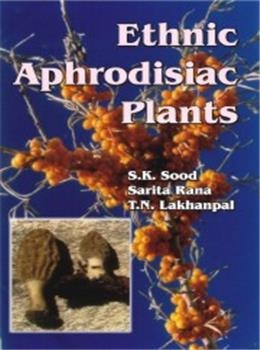Ethnic Aphrodisiac Plants
Ethnic Aphrodisiac Plants is backordered and will ship as soon as it is back in stock.
Couldn't load pickup availability
Genuine Products Guarantee
Genuine Products Guarantee
We guarantee 100% genuine products, and if proven otherwise, we will compensate you with 10 times the product's cost.
Delivery and Shipping
Delivery and Shipping
Products are generally ready for dispatch within 1 day and typically reach you in 3 to 5 days.
Book Details
-
Authors: S.K. Sood, S. Rana & T.N. Lakhanpal
-
Publisher: Scientific Publishers
-
Language: English
-
Edition: 1st Edition
-
Year of Publication: 2005
-
ISBN: 9788172333951
-
Pages: 190
-
Cover: Hardcover
-
Size: 6.5 x 9.75 inches
-
Weight: 500 gm
About the Book
This compendium focuses on the fascinating and culturally significant role of aphrodisiac plants throughout history. Sexual health has been an important aspect of human well-being across cultures, and many traditional remedies have been used for enhancing vitality and vigor. From ancient kings to modern-day medicine, the use of plants for improving sexual health is deeply rooted in cultural history, and this book presents a thorough exploration of this subject.
The book covers 456 plant species from 331 genera and 116 families, providing botanical names, synonyms, common names in English, Hindi, and Sanskrit, distribution, parts used, active constituents, and aphrodisiac preparations. It also highlights the biological activities of these plants. The species include not only angiosperms but also fungi, lichens, gymnosperms, and pteridophytes, with a special emphasis on dicotyledons.
This book is designed to provide baseline data for researchers, students, and professionals in the fields of economic botany, ethnobotany, and reproductive biology. In addition, there are 8 useful appendices and 43 color photographs to assist with identification and understanding. By compiling this information in one place, this book serves as an invaluable resource for anyone interested in the scientific and historical perspectives of aphrodisiac plants.





